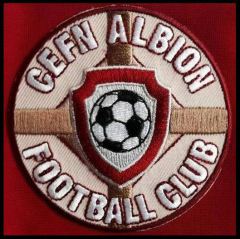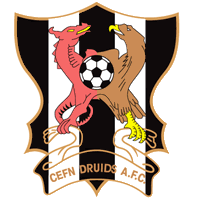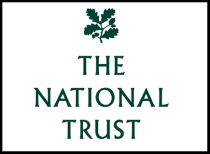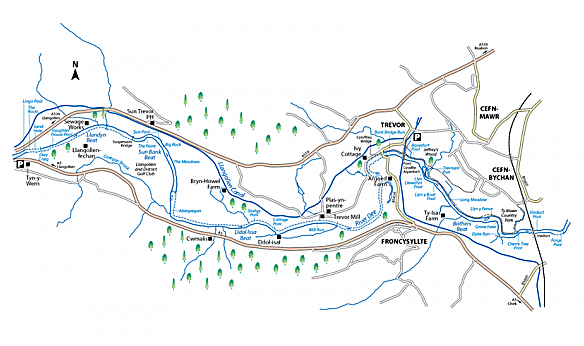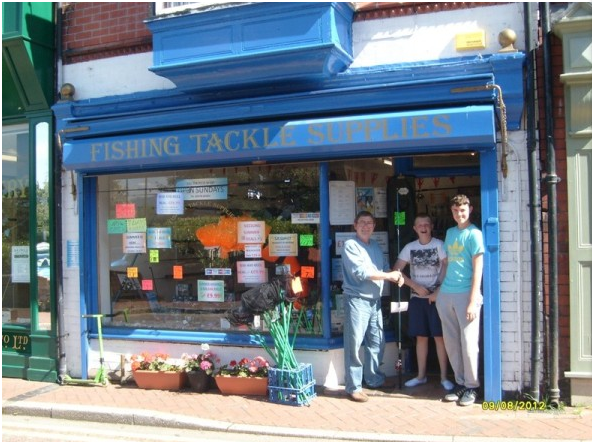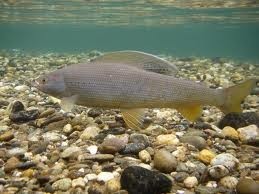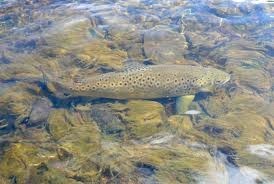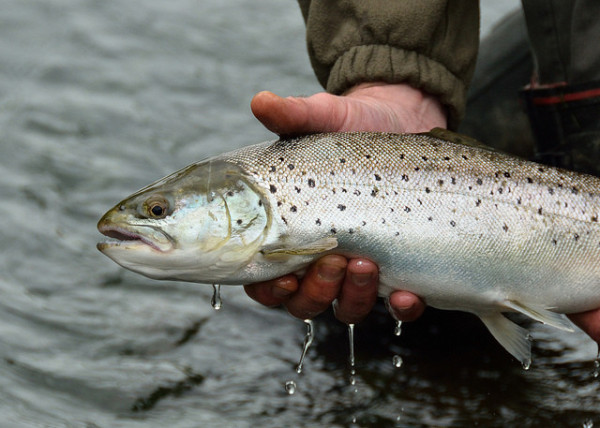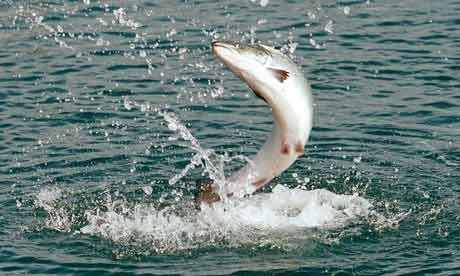Llangollen Maelor Angling
Llangollen Maelor Angling was founded in 1940, and controls fishing on approximately 10 miles of the Welsh River Dee. The river is fed by the headland lakes of Alwen, Brenig, Celyn and Bala, and is one of the purest rivers in Europe. It is internationally renowned for brown trout and grayling fishing, and has good runs of salmon and sea trout throughout the season.
Maesmawr Farm, Tyn Dwr Road, Llangollen, Denbighshire, LL20 8AR
email: info@llangollen-maelor-angling.com
Website: www.llangollen-maelor-angling.com
Lure-It Uk Fishing Tackle
We are able to supply Day/Weekly permits for the River Dee for Trout/Grayling, Seven days a week. this will give you access to approximately 16 miles of river bank. The stretch of the River Dee covered is from The Chester to Shrewsbury Railway Viaduct in Cefn Mawr (Ty Mawr Country Park) all the way up to Llantisilio, past the Sun Inn, Rhewl. Fly fishing only upstream from the Chain Bridge Hotel, Llangollen. A Day Permit is only £12, and a weekly one £60.
We also serve as a Tourist Information Service for Cefn Mawr, the Pontcysyllte Aqueduct & Cefn Mawr Viaduct World Heritage Site Corridor. Our Service has the speciality of being staffed by our selves, i.e. we live here so we know what we are talking about!
The Grayling
The grayling is known as the 'lady of the stream was once controlled by anglers because of their ability to stop trout colonising stretches of rivers and streams. They are largely a shoal species and therefore can out-compete the more individual trout. In England and Wales they can be fished for throughout the coarse fishing season, 16 June to 14 March, providing thrilling sport on the fly when the trout season is closed.
The grayling grows to a maximum recorded length of 60cm or 24in and a maximum recorded weight of 6.7kg or 15lb. Individuals of the species have been recorded as reaching an age of 14 years.
The grayling prefers cold, clean, running river waters, but also occurs in lakes. The fish feeds on vegetable matter, as well as crustaceans, insects and spiders, molluscs and smaller fishes.
Grayling can be caught along the whole stretch of the River Dee running from the Horse Shoe Falls upstream of Llangollen down and under the Pontcysyllte Aqueduct Cefn Viaduct and Chirk Aqueduct and Viaduct where the River Ceiriog joins.
Brown Trout
The brown trout is originally a European species of fish. It includes both purely freshwater populations, referred to Salmo trutta morpha fario and Salmo trutta morpha lacustris, and anadromous forms are known as the sea trout or Salmo trutta morpha trutta. The latter migrates to the oceans for much of its life and returns to freshwater only to spawn. Sea trout in the UK and Ireland have many regional names, including sewin (Wales), finnock (Scotland), peal (West Country), mort (North West England) and white trout (Ireland).
The brown trout is a medium-sized fish, growing to a mature weight of 1 kg (2 lb). The spawning behaviour of brown trout is similar to that of the closely related Atlantic salmon. A typical female produces about 2,000 eggs per kilogram (900 eggs per pound) of body weight at spawning.
Brown trout can live to ages of 20 years. But as with the Atlantic salmon, a high proportion of males die after spawning, and probably fewer than 20% of anadromous female kelts recover from spawning. The migratory forms grow to significantly larger sizes for their age due to abundant forage fish in the waters where they spend most of their lives. Brown trout are active both by day and by night and are opportunistic feeders.
While in fresh water, their diets will frequently include invertebrates from the streambed, other fish, frogs, mice, birds, and insects flying near the water's surface. The high dietary reliance upon insect larvae, pupae, nymphs and adults is what allows trout to be a favoured target for fly fishing. Brown trout can also be caught with lures such as spoons, spinners, jigs, plugs, plastic worm imitations, and live or dead baitfish. Freshwater brown trout range in colour from largely silver with relatively few spots and a white belly, to the more well-known brassy brown cast fading to creamy white on the fish's belly, with medium-sized spots surrounded by lighter halos. The more silver forms can be mistaken for rainbow trout. Regional variants include the so-called "Loch Leven" trout, distinguished by larger fins, a slimmer body, and heavy black spotting, but lacking red spots.
In small streams, brown trout are important predators of macro invertebrates, and declining brown trout populations in these specific areas would affect the entire aquatic food web.
Cover or structure is important to trout, and they are more likely to be found near submerged rocks & logs, undercut banks, and overhanging vegetation. Structure provides protection from predators, bright sunlight, and higher water temperatures. Access to deep water for protection in winter, or fast water for protection from low oxygen levels in summer are ideal and hence the River Dee offers the Brown trout an ideal home water. Trout are more often found in heavy and strong currents.
The fish is not considered to be endangered, although, in some cases, individual stocks are under various degrees of stress mainly through habitat degradation, overharvest and artificial propagation. Increased frequency of excessively warm water temperatures in high summer causes a reduction in dissolved oxygen levels which can cause 'summer kills' of local populations if temperatures remain high for sufficient duration and deeper/cooler or fast, turbulent more oxygenated water is not accessible to the fish. This phenomenon can be further exacerbated by pollution - often from the use of agricultural fertilizers within the drainage basin.
Overfishing is a problem where anglers fail to identify and return mature female fish into the lake or stream. Each large female removed can result in thousands fewer eggs released back into the system when the remaining fish spawn.
Another threat is other introduced organisms. For example in Canada's Bow River, a non-native alga Didymosphenia geminata - common name rock snot (due to appearance) - has resulted in reduced circulation of water amongst the substrate of the river bed in affected areas. This, in turn, can greatly reduce the number of trout eggs which survive to hatch. Over time, this leads to reduction of the population of adult fish in the areas affected by the algae, forming a circle of decline. Rock snot is believed to have spread accidentally on the soles of the footwear of visitors from areas where the alga is native. The wide variety of issues that adversely affect brown trout throughout its range do not exclusively affect brown trout, but affect many or all species within a water body, thus altering the ecosystem in which the trout reside.
Sea Trout
Sea trout and brown trout are the same species (Salmo trutta). A combination of genetics and environmental factors (principally lack of food), will mean that some trout will go to sea to feed before returning to spawn. This is called an ‘anadromous’ lifestyle.
Young trout of 1 to 3 years old and 5 to7 inches long will go through some physiological changes which include the ability to cope with salt water and changing to a silver colour .These small silver trout are called smolts. Smolts will shoal together to migrate to sea, usually around late March / April and usually at night.
Going to sea gives the trout access to a much richer source of food, so sea trout will nearly always be substantially bigger than the resident brown trout of the same river. Specimens of 10kg have been caught in the rivers of Wales and Scotland.
Most sea trout are female, and their larger size means that they produce more eggs – a more valuable source of future generations than milt, as only a small volume of milt is required for fertilisation. An average of 800 eggs are produced per pound weight of hen fish, atlhough this figure can vary considerably. Egg size can also vary, but in general larger, older sea trout will produce more and larger eggs, and hence these are the most valuable fish to return - and not take home to eat !
Large male sea trout will develop a prominant 'kype' or hooked lower jaw as they prepare for spawning. Sea trout return to their natal river to spawn, and can start coming back after only a few months at sea. Small sea trout are variously called finnock, peal, herling and whitling (although whitling is a term generally used for small sea trout in estuaries). Sea trout can enter the river at any time from April onwards, but most will arrive in the summer and early autumn (June - October) and wait in deep pools or in areas of the river with good overhead tree cover until it is time to spawn. They are hard to see during the day and will tend to move at night. Often the only clue that sea trout are in the river at all is a large 'splosh' as they jump in the dark.
Unlike salmon, sea trout do not usually die after spawning. Around 75% of sea trout will return to the sea to feed and then come back again to the river to spawn. Like salmon, sea trout do not generally feed in fresh water, even though they may enter fresh water many months before spawning. When they first enter the river, sea trout are very silver in colour. Once in the river for a while, they lose this silver colour and look like resident brown trout, only bigger! The only sure way to tell if a trout has been to sea is to take a scale and ‘read’ it under magnification – the growth rings will show if it has grown quickly on the rich food in the sea.
Salmon
The salmon has long been at the heart of the culture of many people and the first return of the year is a significant event. For many centuries, people caught salmon as they swam upriver to spawn.
Salmon eggs are laid in freshwater streams typically at high latitudes. The eggs hatch into alevin or sac fry. The fry quickly develop into parr with camouflaging vertical stripes. The parr stay for six months to three years in their natal stream before becoming smolts, which are distinguished by their bright, silvery colour with scales that are easily rubbed off. Only 10% of all salmon eggs are estimated to survive to this stage. The smolt body chemistry changes, allowing them to live in saltwater.
Freshwater streams and estuaries provide important habitat for many salmon species. They feed on terrestrial and aquatic insects, amphipods, and other crustaceans while young, and primarily on other fish when older. Eggs are laid in deeper water with larger gravel, and need cool water flow (to supply oxygen) to the developing embryos. Mortality of salmon in the early life stages is usually high due to natural predation and human-induced changes in habitat, such as siltation, high water temperatures, low oxygen concentration, loss of stream cover, and reductions in river flow. Estuaries and their associated wetlands provide vital nursery areas for the salmon prior to their departure to the open ocean. Wetlands not only help buffer the estuary from silt and pollutants, but also provide important feeding and hiding areas
Atlantic salmon spend between one and four years at sea. The adult salmon then return primarily to their natal streams to spawn. The precise method salmon use to navigate has not been established, though their keen sense of smell is involved Prior to spawning, depending on the species, salmon undergo changes. They may grow a hump, develop canine teeth, develop a kype (a pronounced curvature of the jaws in male salmon).
All will change from the silvery blue of a fresh-run fish from the sea to a darker colour. Salmon can make amazing journeys, sometimes moving hundreds of miles upstream against strong currents and rapids to reproduce.
To lay her roe, the female salmon uses her tail (caudal fin), to create a low-pressure zone, lifting gravel to be swept downstream, excavating a shallow depression, called a redd. The redd may sometimes contain 5,000 eggs covering 30 square feet (2.8 m2). The eggs usually range from orange to red. One or more males will approach the female in her redd, depositing his sperm, or milt, over the roe. The female then covers the eggs by disturbing the gravel at the upstream edge of the depression before moving on to make another redd. The female will make as many as seven redds before her supply of eggs is exhausted. Their bodies rapidly deteriorate right after they spawn as a result of the release of massive amounts of corticosteroids.



